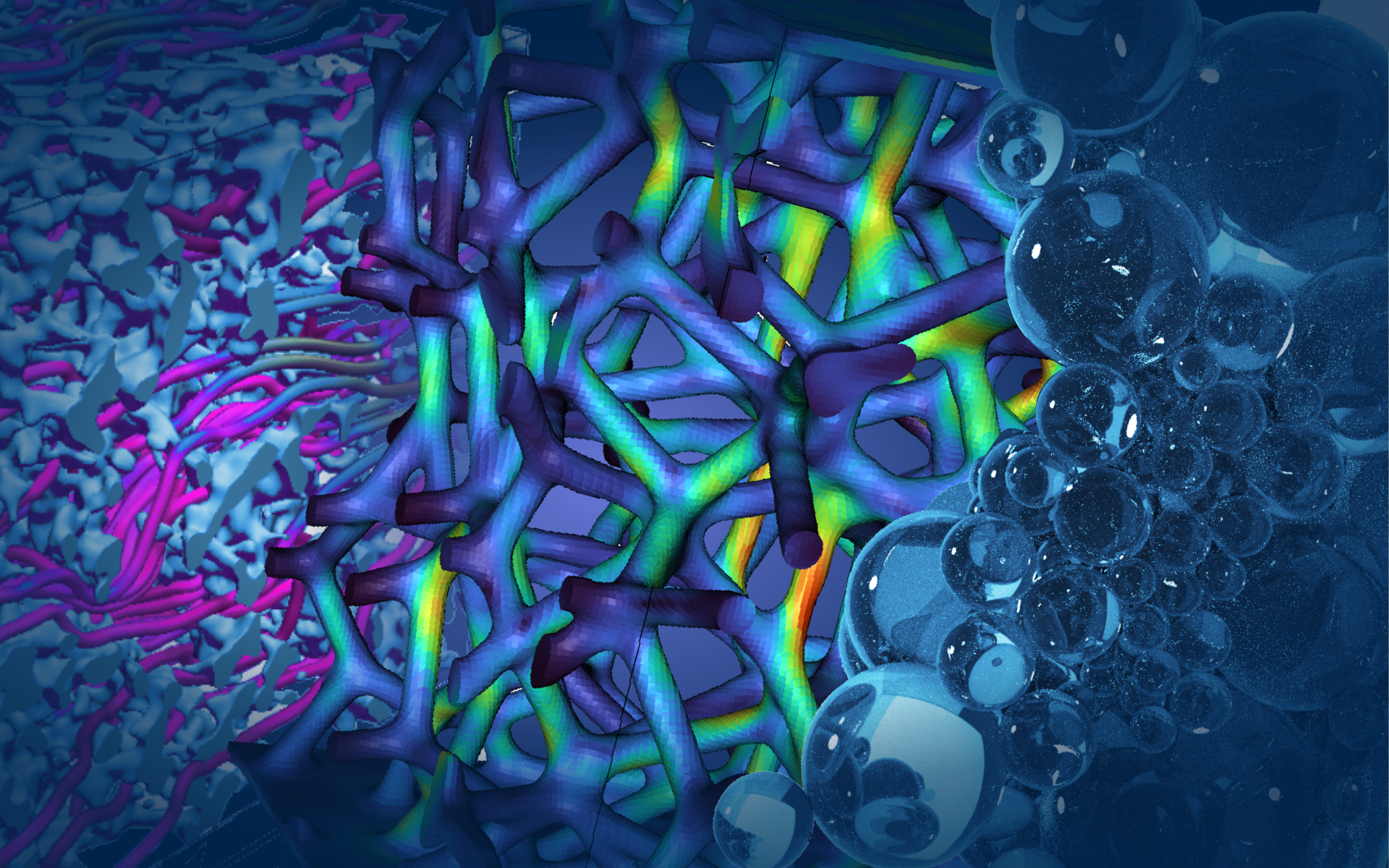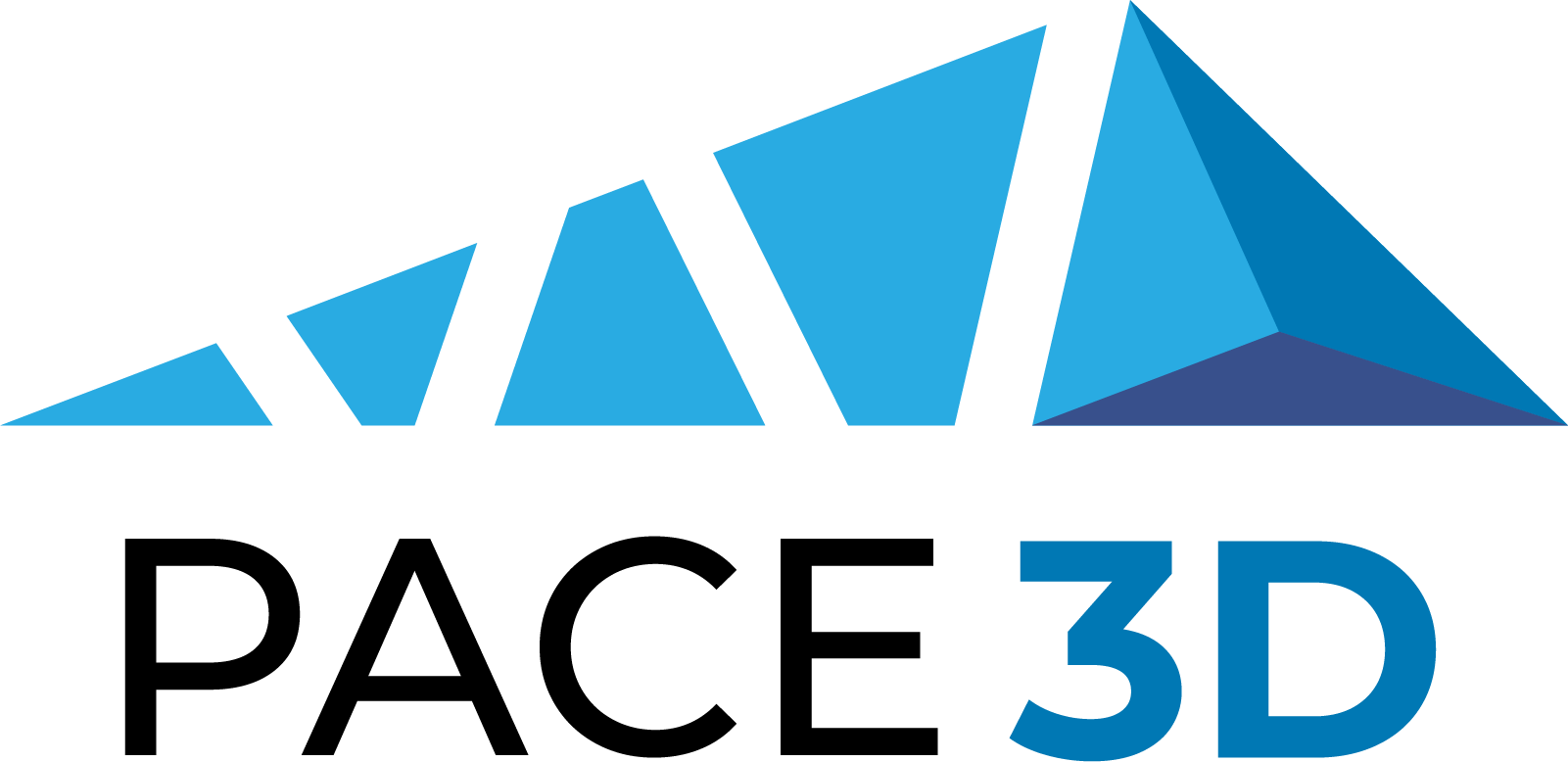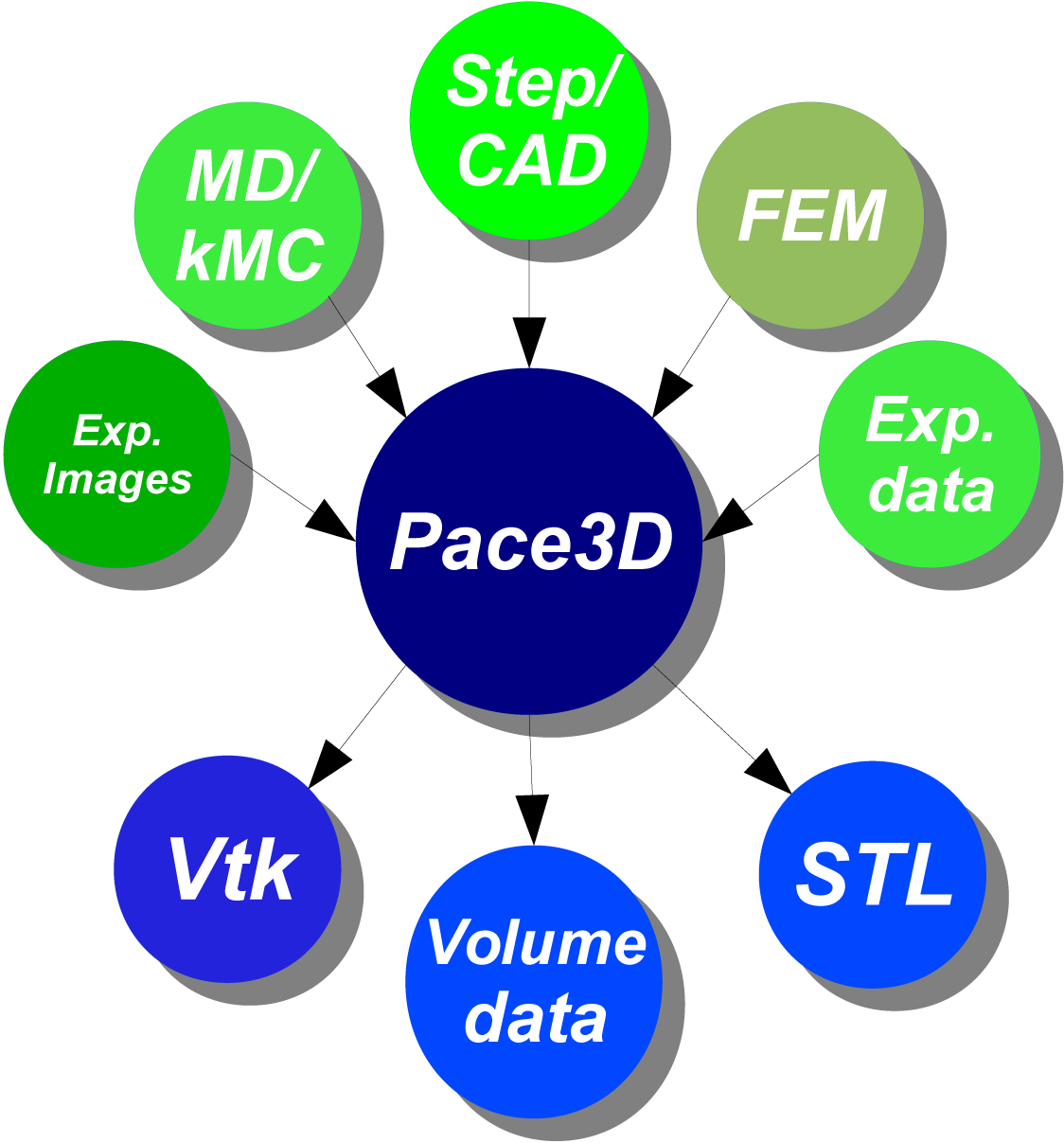Pace3D research software
Pace3D (Parallel Algorithms for Crystal Evolution in 3D) is a modular software package for large-scale parallel (3D+t) simulations of phase transformation processes and microstructure formation in multicomponent, multiphase and polycrystalline material systems, taking into account multiphysical influencing variables such as heat and mass diffusion, flow, thermo-/chemo-mechanics, electrochemistry and magnetism.
Furthermore, the Pace3D software package contains a comprehensive compendium of pre- and post-processing algorithms as well as visualization methods with programming interfaces for data preparation and data analysis of dynamic microstructure development. The data science methods can be combined as workflows and are made available in the Kadi4Mat research data infrastructure under FAIR principles for sustainable application.
The framework is continuously developed using the GIT version management system and contains various documentation options for developers and users.
The package includes:
- Pre-processing tools for data preparation to configure calculations and domain fillings
- Simulations for numerical solution of the coupled nonlinear evolution equations, including parallel and adaptive grid methods as well as memory and computation time optimizations
- Post-processing tools for data analysis and high-quality visualizations
Modules for solving various applications
- Phase field models for microstructure formation in multicomponent and multiphase materials
- CFD solver for modeling fluid flow processes based on the Navier-Stokes equations and the Lattice-Boltzmann method
- Solid mechanics
- Micromagnetism
- Electric fields
- The large chemical potential and the large elastic potential
Further modules and options
- Implementation in C, C++ for Linux, approx. 550,000 l.o.c.
- Simulations can run sequentially or in parallel on high-performance computers by using MPI and OpenMP
- Performance optimization of the software is achieved by adaptive meshes, by algorithms that save computing time and memory, by dynamic domain decomposition and by data compression
- The code is vectorized to run efficiently on modern CPUs and XeonPhi co-processors
- A framework for easy access to the pre- and post-processing functions
- A huge package of pre- and post-processing methods
- Integration of external data
- Import and export of various file formats
- A library for the rapid development of new import and export filters
- Already implemented import filters are available for MD data, kMC, image-to-voxel data converter, FEM, experimental data, e.g. from electron backscatter diffraction (EBSD)
- Import of CAD data with the STEP file format
- Coupling of material parameter databases



